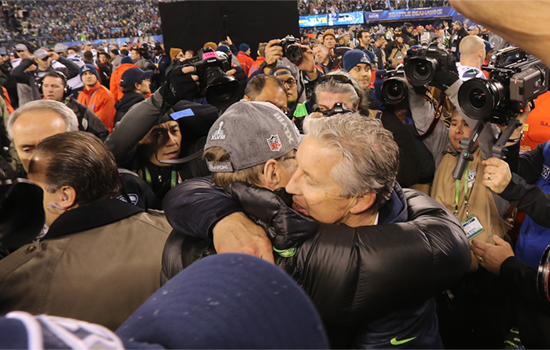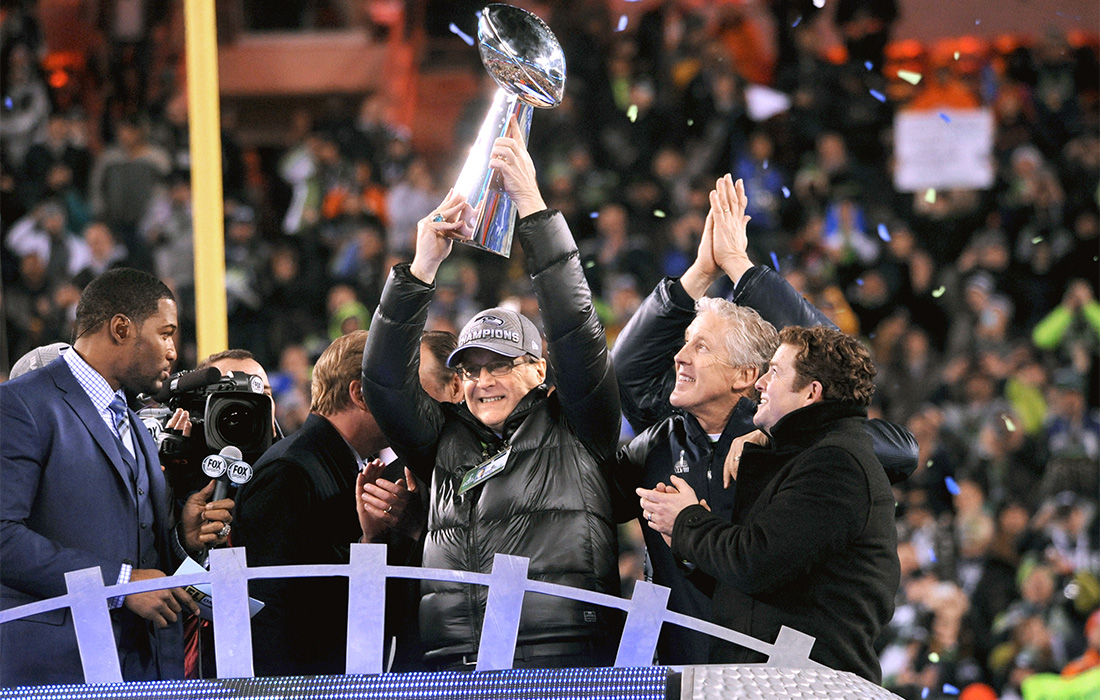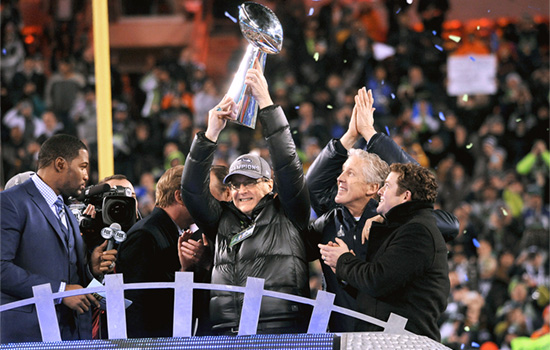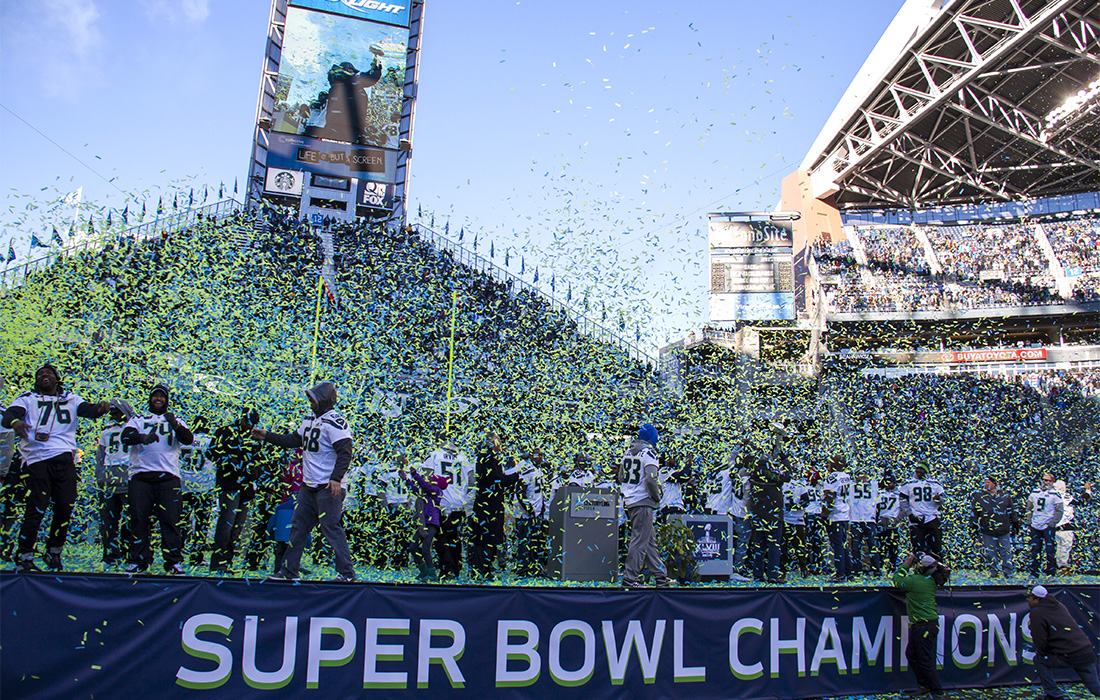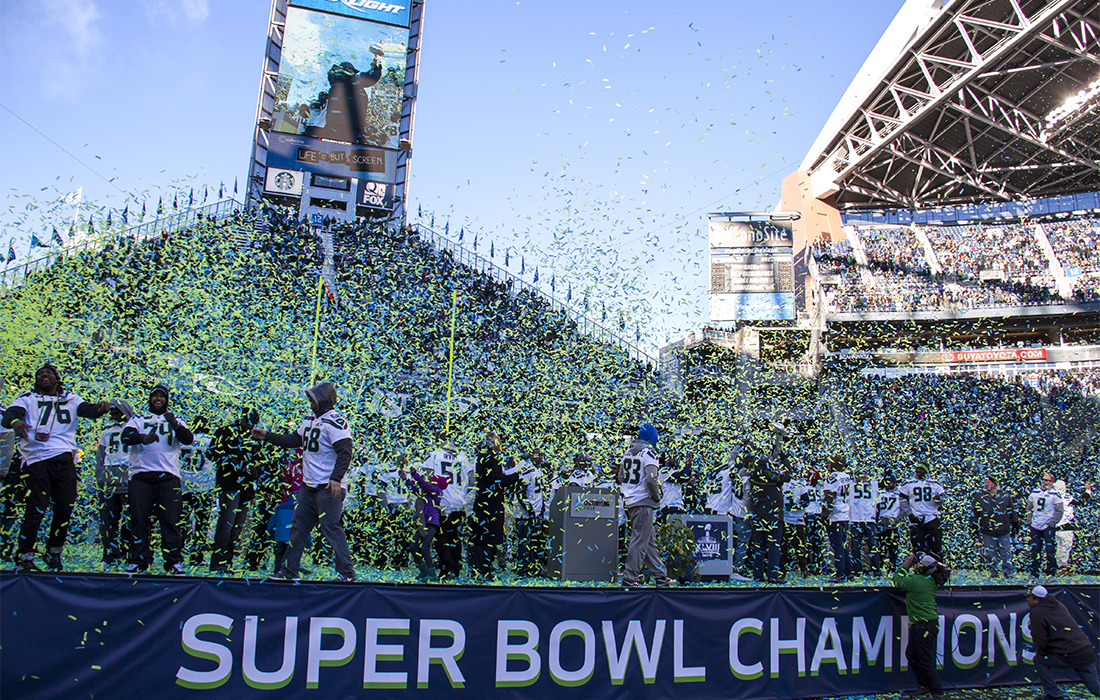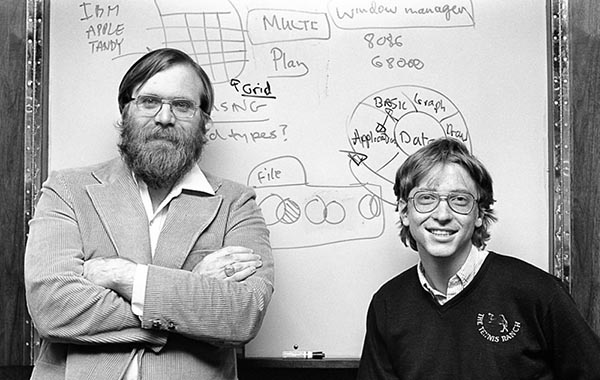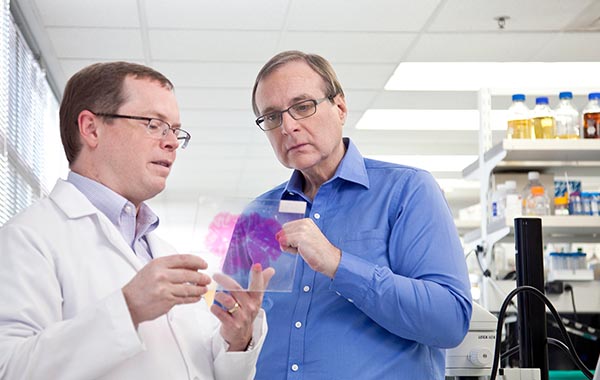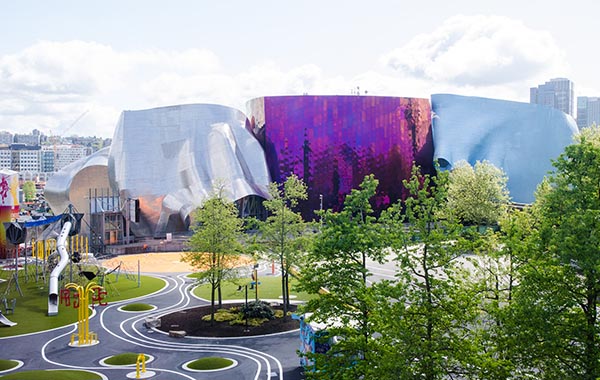Seattle Seahawks
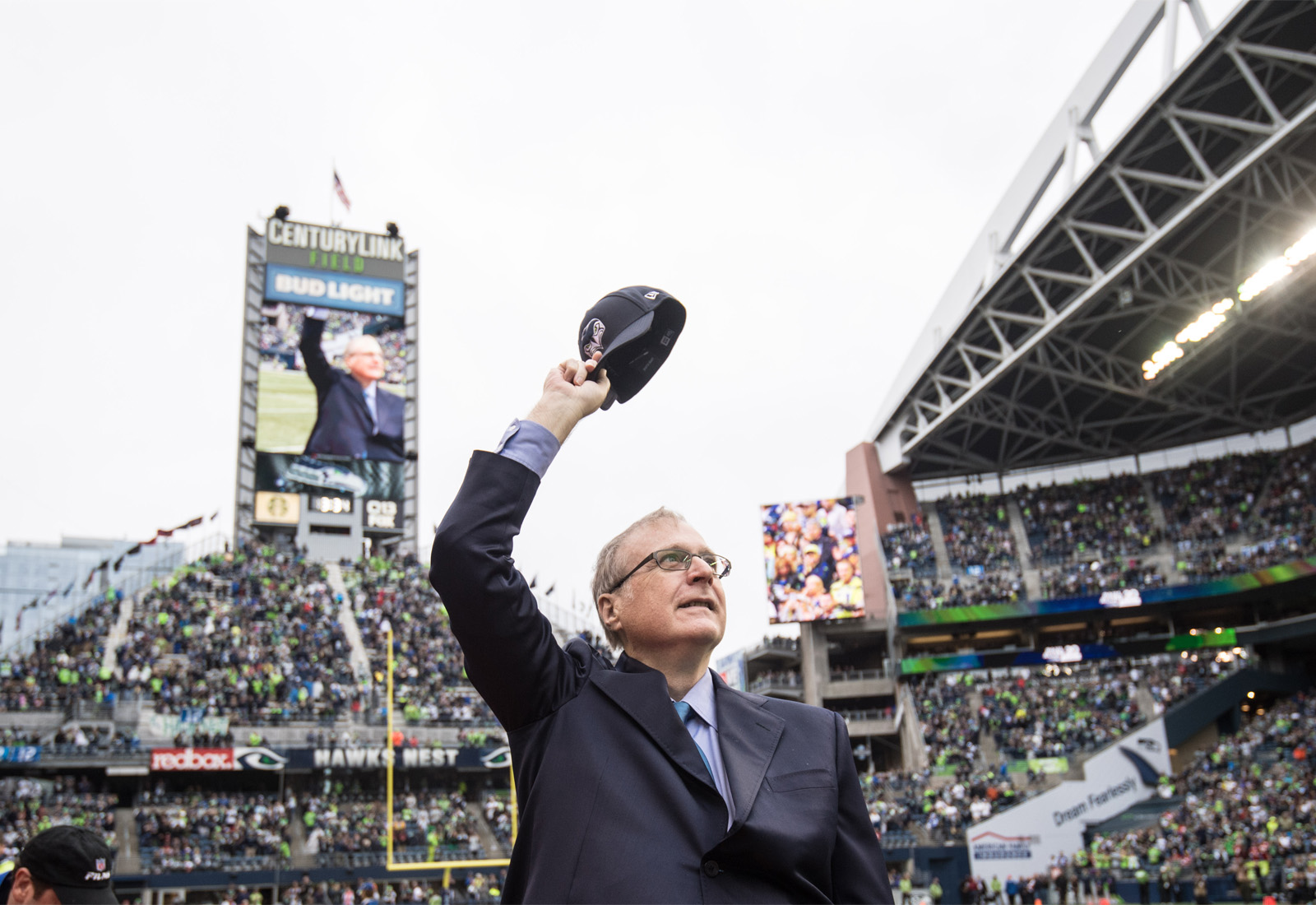
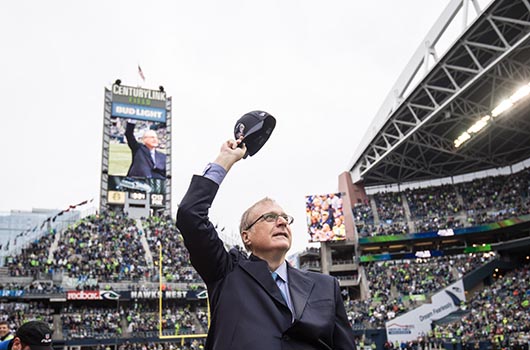
For investors and would-be sports team owners in the mid 1990s, NFL teams were risky investments. And those risks were even greater in a mid-size market with an aging stadium like the infamous and dilapidated Kingdome.
For the Seahawks back then, those challenges were quickly coming to a head. They were in the midst of a long playoff drought (with the last postseason win a decade prior) and then-owner Ken Behring was doing more than just thinking about relocating the team to Southern California — he actually started the process following the 1995 season. The search was on for a potential owner with local ties and the resources to keep the Seahawks in the Pacific Northwest, where the team was as a source of civic pride.
For the Seahawks back then, those challenges were quickly coming to a head. They were in the midst of a long playoff drought (with the last postseason win a decade prior) and then-owner Ken Behring was doing more than just thinking about relocating the team to Southern California — he actually started the process following the 1995 season. The search was on for a potential owner with local ties and the resources to keep the Seahawks in the Pacific Northwest, where the team was as a source of civic pride.
The press conference announcing Paul's purchase of the Seahawks, keeping the team from being relocated to Los Angeles. Image Copyright Elaine Thompson/AP Photo.
The demolition of the aging Kingdome in 2000. Photo credit Dan Levine.
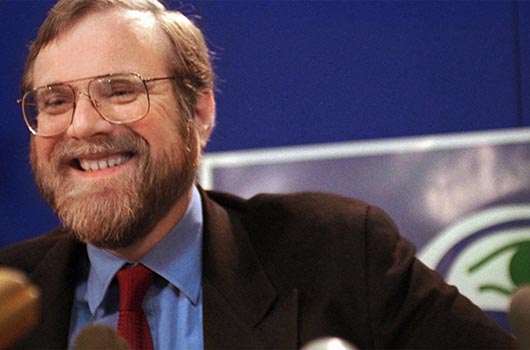
The press conference announcing Paul's purchase of the Seahawks, keeping the team from being relocated to Los Angeles. Image Copyright Elaine Thompson/AP Photo.
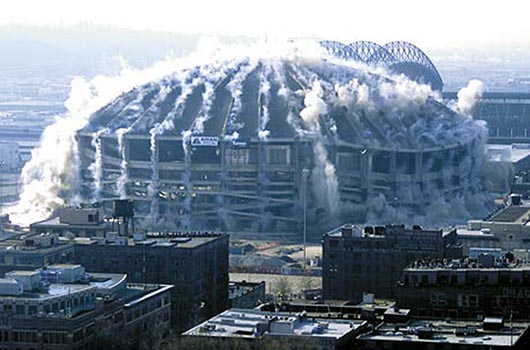
The demolition of the aging Kingdome in 2000. Photo credit Dan Levine.
It didn’t take long for local politicians to realize that Paul, who already owned the NBA’s Portland Trail Blazers, was the man for the job. “At the end of the day, there was no Plan B,” said King County Councilmember Pete von Reichbauer. “There was only Plan A and Plan A was Paul Allen."
Despite the considerable financial risks associated with doing so, Paul agreed to purchase the team out of a sense of commitment to the community where he was raised. “If I entered the NBA out of passion, I was called to the National Football League out of civic duty,” Paul said.
But before he went through with buying the team, voters around the state would first need to agree to fund the construction of a new stadium for the Seahawks to call home. The resulting bill, Referendum 48 (prophetically, the same number as the Super Bowl the team would go on to win in 2013), passed on June 17, 1997. It did so by a razor-thin, 51.1-to-48.9-percent margin and resulted in a unique, public-private funding agreement. Football in Seattle had been saved and at the victory party, Paul himself victoriously played his guitar in celebration.
Despite the considerable financial risks associated with doing so, Paul agreed to purchase the team out of a sense of commitment to the community where he was raised. “If I entered the NBA out of passion, I was called to the National Football League out of civic duty,” Paul said.
But before he went through with buying the team, voters around the state would first need to agree to fund the construction of a new stadium for the Seahawks to call home. The resulting bill, Referendum 48 (prophetically, the same number as the Super Bowl the team would go on to win in 2013), passed on June 17, 1997. It did so by a razor-thin, 51.1-to-48.9-percent margin and resulted in a unique, public-private funding agreement. Football in Seattle had been saved and at the victory party, Paul himself victoriously played his guitar in celebration.
Paul greets Quarterback Matt Hasselbeck, who led the team to compete in Super Bowl XL during the 2005 season.
Paul celebrating the team winning the NFC championship. Image Copyright Robert Giroux/Getty Images.
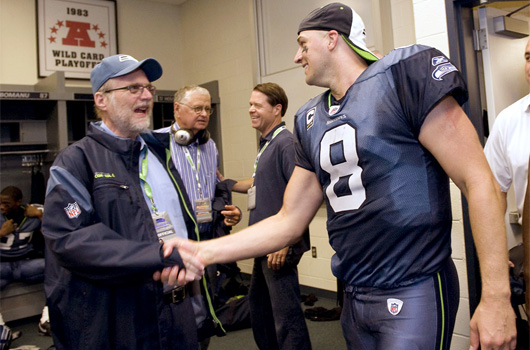
Paul greets Quarterback Matt Hasselbeck, who led the team to compete in Super Bowl XL during the 2005 season.
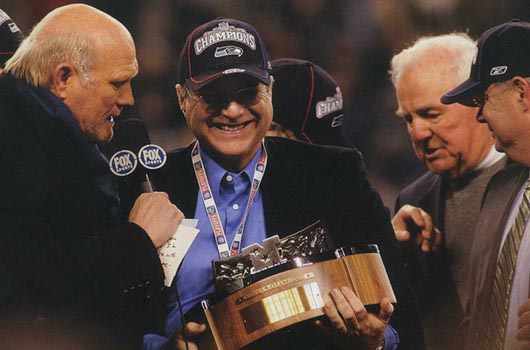
Paul celebrating the team winning the NFC championship. Image Copyright Robert Giroux/Getty Images.
In the years that followed, success came to the team largely because Paul wasn’t afraid to make bold moves to improve the team. For example, he hired Mike Holmgren away from the Green Bay Packers where he had led that team to two Super Bowl appearances and one championship. Holmgren went on to lead the Seahawks to their first Super Bowl appearance and turned the team into an NFC West powerhouse.
After Holmgren stepped down, and after the team went 5-11 under Jim Mora, Paul opted to hit the reset button. From there, the team was back on the right track after he made a headline-grabbing hire by coaxing Pete Carroll away from the University of Southern California after the national championship-winning coach had said no to the NFL many times before.
After Holmgren stepped down, and after the team went 5-11 under Jim Mora, Paul opted to hit the reset button. From there, the team was back on the right track after he made a headline-grabbing hire by coaxing Pete Carroll away from the University of Southern California after the national championship-winning coach had said no to the NFL many times before.
While Paul had his parents to thank for instilling in him the importance of supporting one’s community, several Seahawks have their team’s owner to thank for helping pass those same principles on to them. Over the years, many star players have formed their own foundations, inspired by Paul’s leadership.
These organizations have positively impacted the Seattle community, their own hometowns, or both. The team’s quarterback, Russell Wilson, who runs his own foundation says of Paul: “To see your owner dedicate his life to making a difference in the world and doing a lot of charity work, it was really inspiring for us players. I know it’s been inspiring for me to really help Seattle and do everything I can to make Seattle a better place, but also the world a better place.”
These organizations have positively impacted the Seattle community, their own hometowns, or both. The team’s quarterback, Russell Wilson, who runs his own foundation says of Paul: “To see your owner dedicate his life to making a difference in the world and doing a lot of charity work, it was really inspiring for us players. I know it’s been inspiring for me to really help Seattle and do everything I can to make Seattle a better place, but also the world a better place.”
As for the impact the team has had on the community, one need look no further than the proliferation of “12s,” the team’s fans. Flags, banners, bumper stickers and T-shirts can be found everywhere throughout the region. Former Washington Governor Gary Locke, who was King County Executive when Paul bought the team, sums up Paul’s impact well: “The Seahawks really are a perfect reflection of his attitude and commitment to community. How the Seahawks have really galvanized the community and really generated so much spirit… [the team has] really helped provide enthusiasm and spirit and vision in our community and really making the community, I think, a better place to live, work, and to raise a family.”
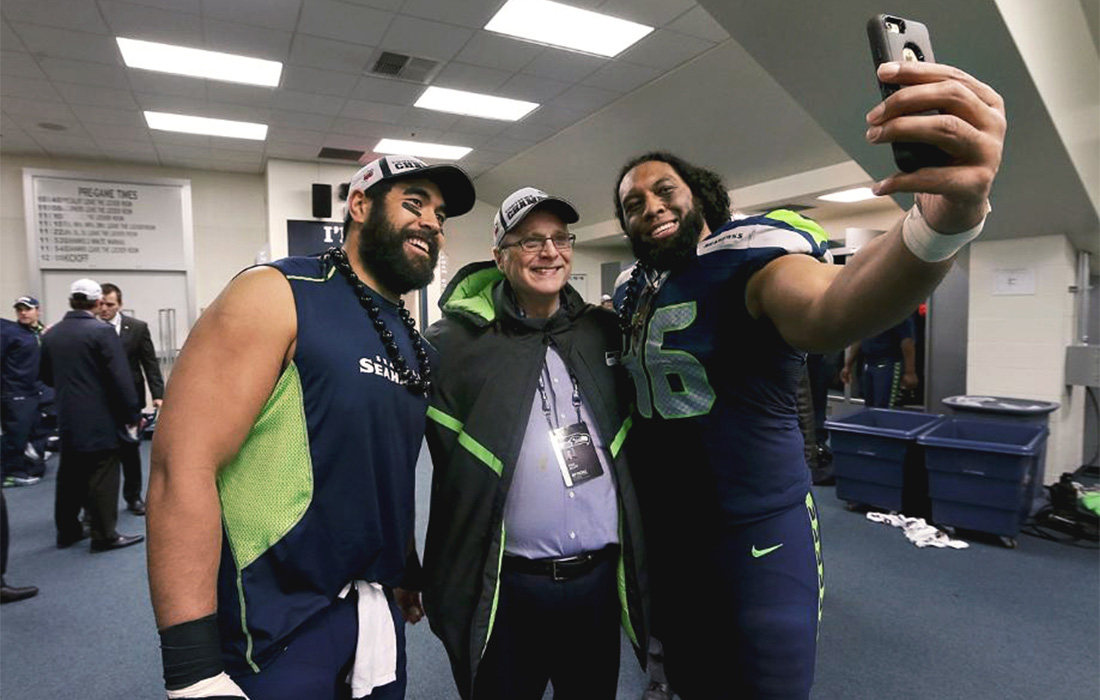
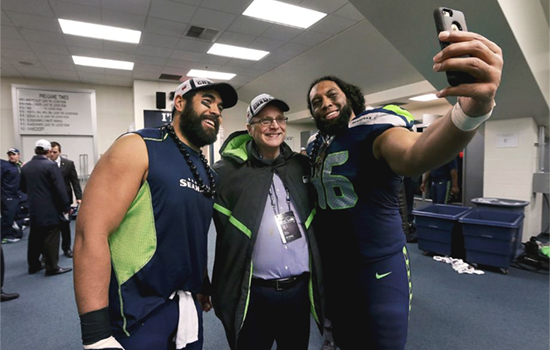
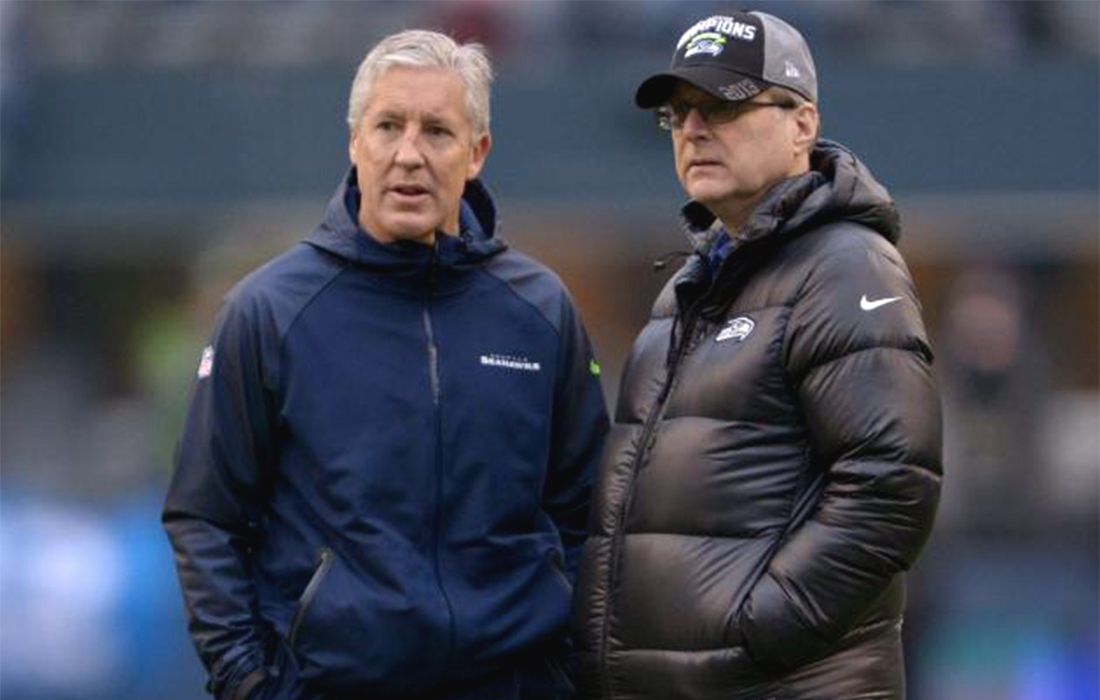
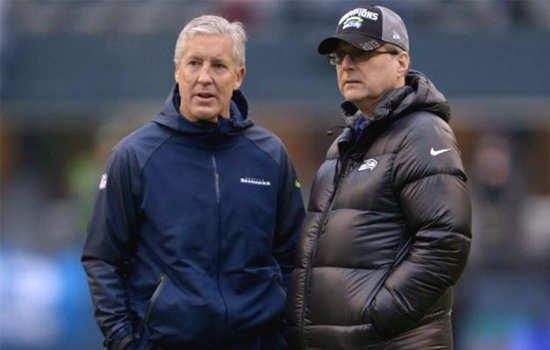
.jpg)
